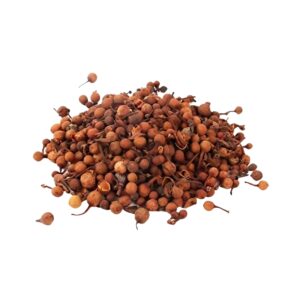About this product
- Hindu puja ceremonies and Havana traditions use Nariyal Gola in important ways.
- It’s a sign of fertility, safety, and success.
- It adds flavor and texture to food.
- Since ancient times, it has been used in Ayurveda to bring the body back into balance.
- Extracted oil can be put on the skin or taken by mouth to heal the body as a whole.
Sabut Nariyal Use in Puja & Havana
Sukha Nariyal is often used in Hindu puja and Havana ceremonies. The ways that these two different religions use dry coconut are a lot alike. It is an important part of the ritual in both cultures because it represents fertility, safety, and success.
In Hindu puja events, the Gola is a blessing to each god or deity. People think this gift will bring good luck and keep evil spirits away from their homes and families. Hindus also give it to Lord Ganesh as a sign of respect for his ability to eliminate things that get in the way of success.
Copra Use in Cooking
A type of dried coconut called Nariyal Gola is a key ingredient in many Indian recipes. It gives the food a unique taste and feel. Copra can be used in many ways in the kitchen, adding flavor to curries, sauces, and even sweets. It can also be used to make chutneys and sauces or added to rice recipes to make them sweeter and crunchier
Shipping & Delivery Policy
At Pujasthan.com, we understand the importance of timely and reliable delivery. All orders are carefully packed and dispatched from our facility in Thane (Mumbai), Maharashtra.
Order Processing Time:
Orders placed before 10:00 AM (Monday to Saturday) are dispatched the same day, subject to product availability.
Orders placed after 10:00 AM, over the weekend, or on public holidays are dispatched the next business day, subject to product availability.
Delivery Options & Timelines:
Please select the appropriate shipping option on the checkout page based on your delivery preference.
Tracking Your Shipment:
Once your order is shipped, you will receive a shipping confirmation email with a tracking link. You can track your package directly on the delivery partner's website for real-time updates.
Returns & Replacement Policy
Your satisfaction is our priority. We offer a flexible and transparent return policy for a seamless shopping experience at Pujasthan.com.
You are eligible for a return or replacement under the following conditions:
Wrong Product Delivered:
If the product received does not match the item you ordered.
➤ Required: Unboxing video for verification.
Manufacturing Defect:
If the item has visible defects or quality issues.
➤ Required: Clear video proof of the defect.
Damaged Item on Arrival:
If the product arrives broken, torn, or in visibly damaged condition.
➤ Required: Unboxing video showing the damage.
Important: Please retain the original packaging and capture a video while unboxing, as it is mandatory for validating claims.
We are committed to resolving all genuine concerns as swiftly and efficiently as possible.
For any assistance, feel free to reach our Customer Support Team via:
📧 Email: pujasthan@gmail.com
📞 WhatsApp: +91-9987998735







Reviews
There are no reviews yet.